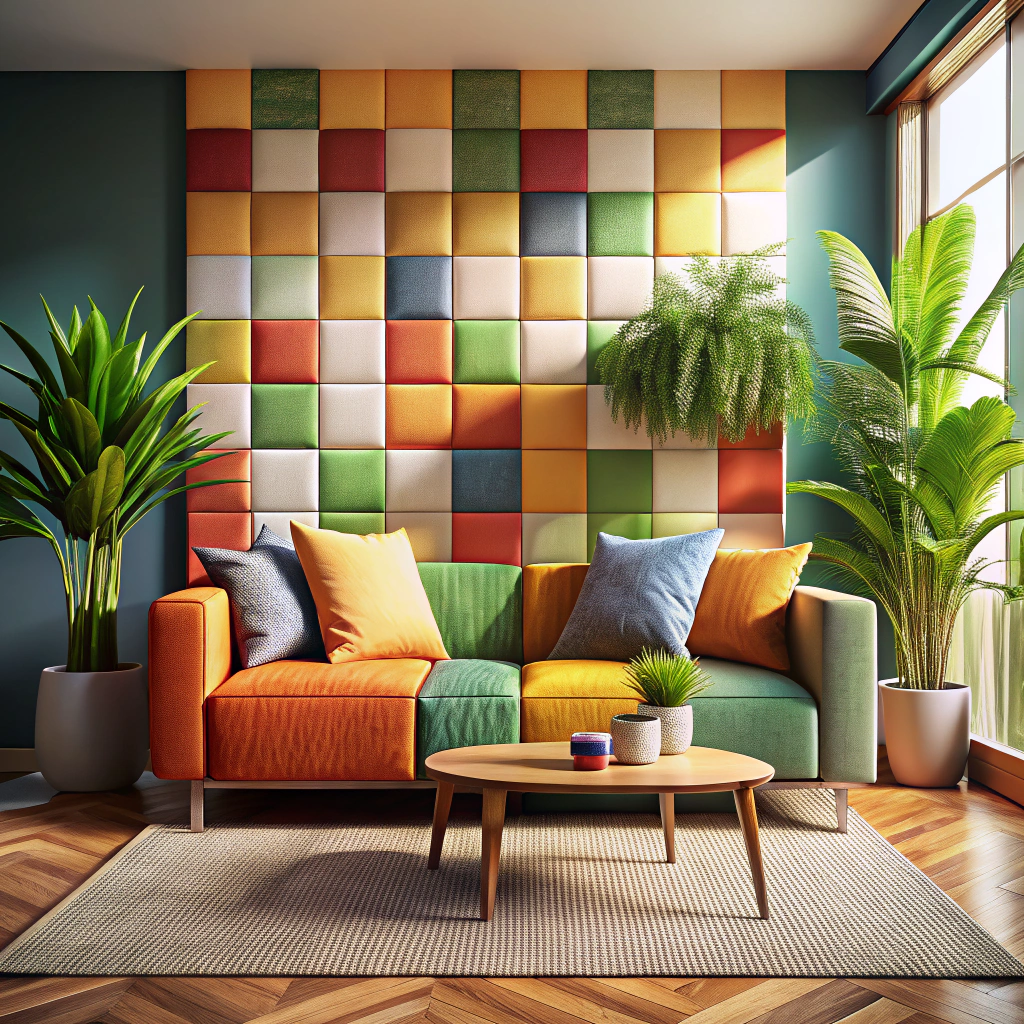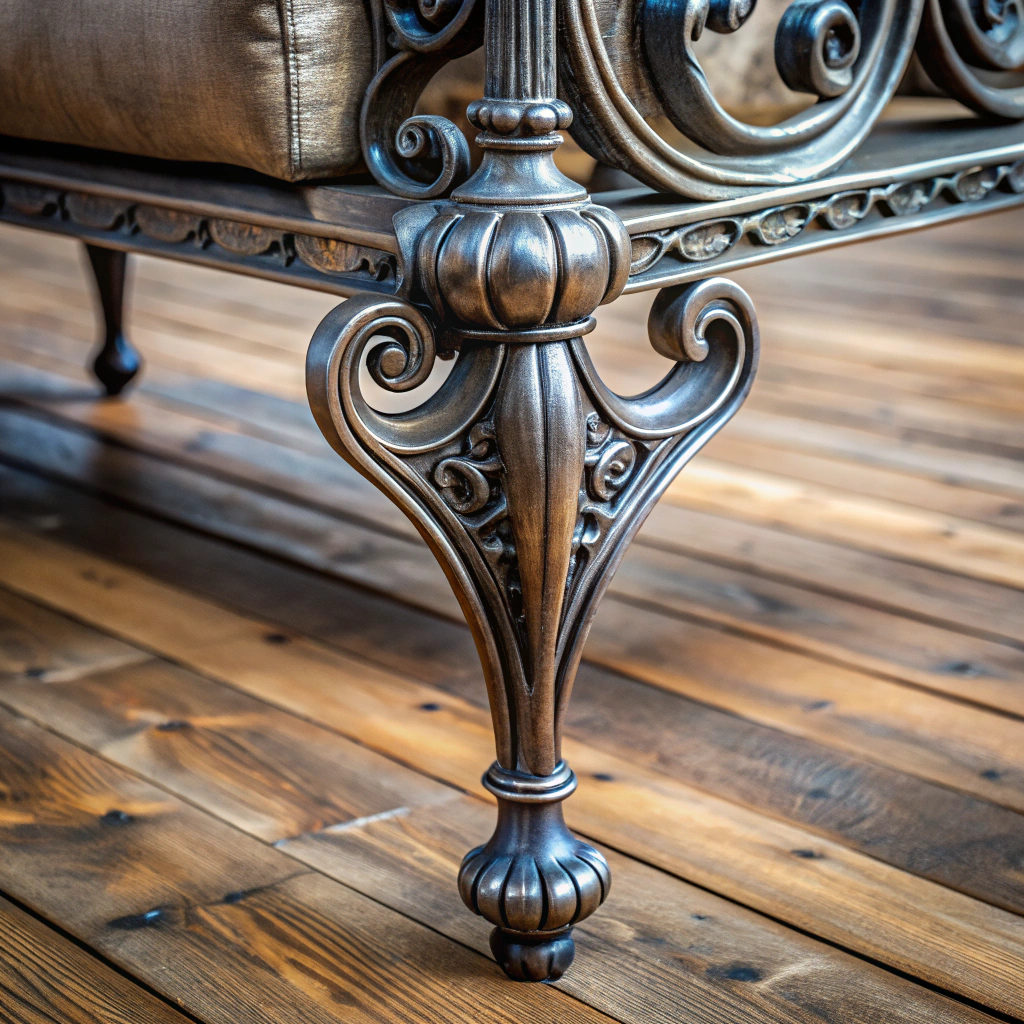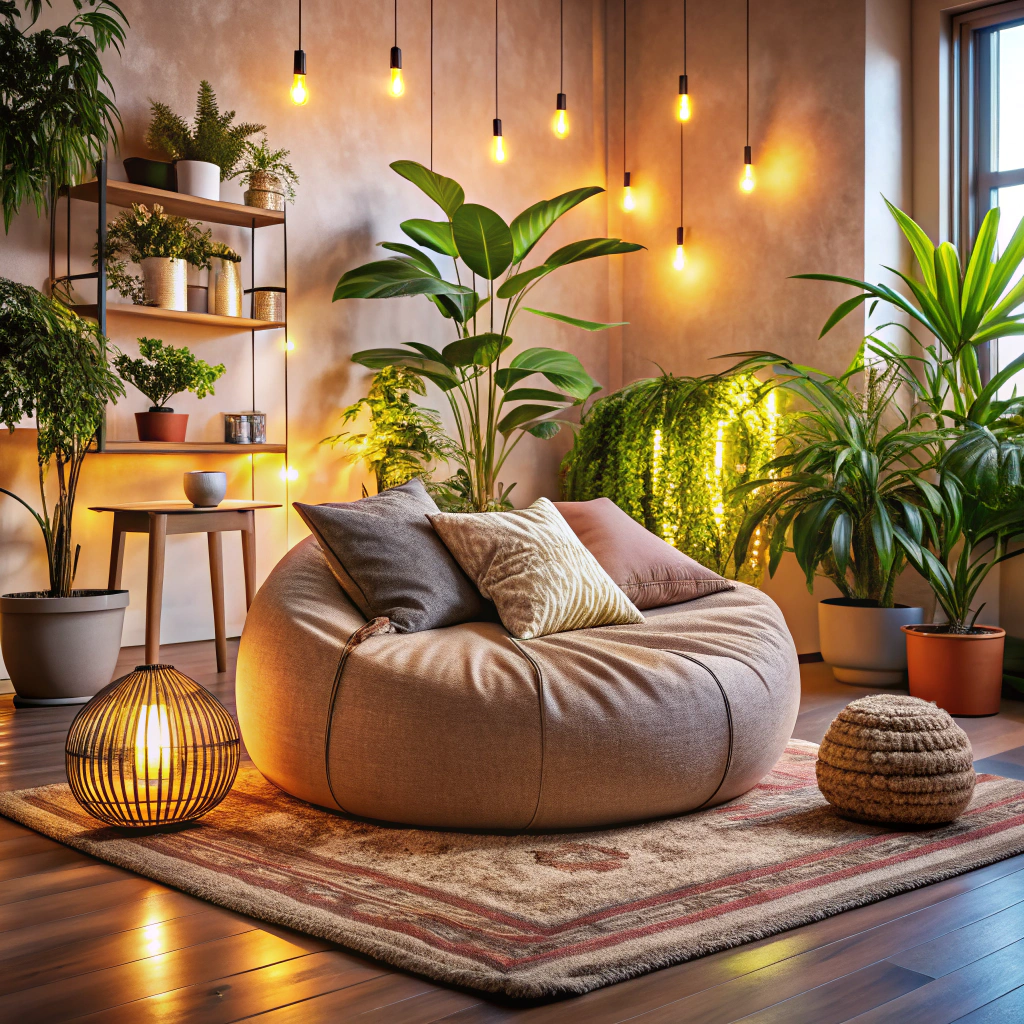Last updated on
Discover how placing a couch in front of a window can transform your living space, offering both aesthetic appeal and functionality.
Have you ever wondered if it’s okay to put a couch in front of a window? Perhaps you’ve just moved into a new home and are struggling to find the perfect spot for your sofa. Or maybe you’re redecorating and want to try something different with your furniture layout.
Whatever the reason, this is a common question that many homeowners ask themselves. In this article, we’ll explore whether or not it’s acceptable to place a couch in front of a window and provide some tips on how to make it work in your space.
So, let’s dive in!
Table of Contents
Assessing the Room Layout
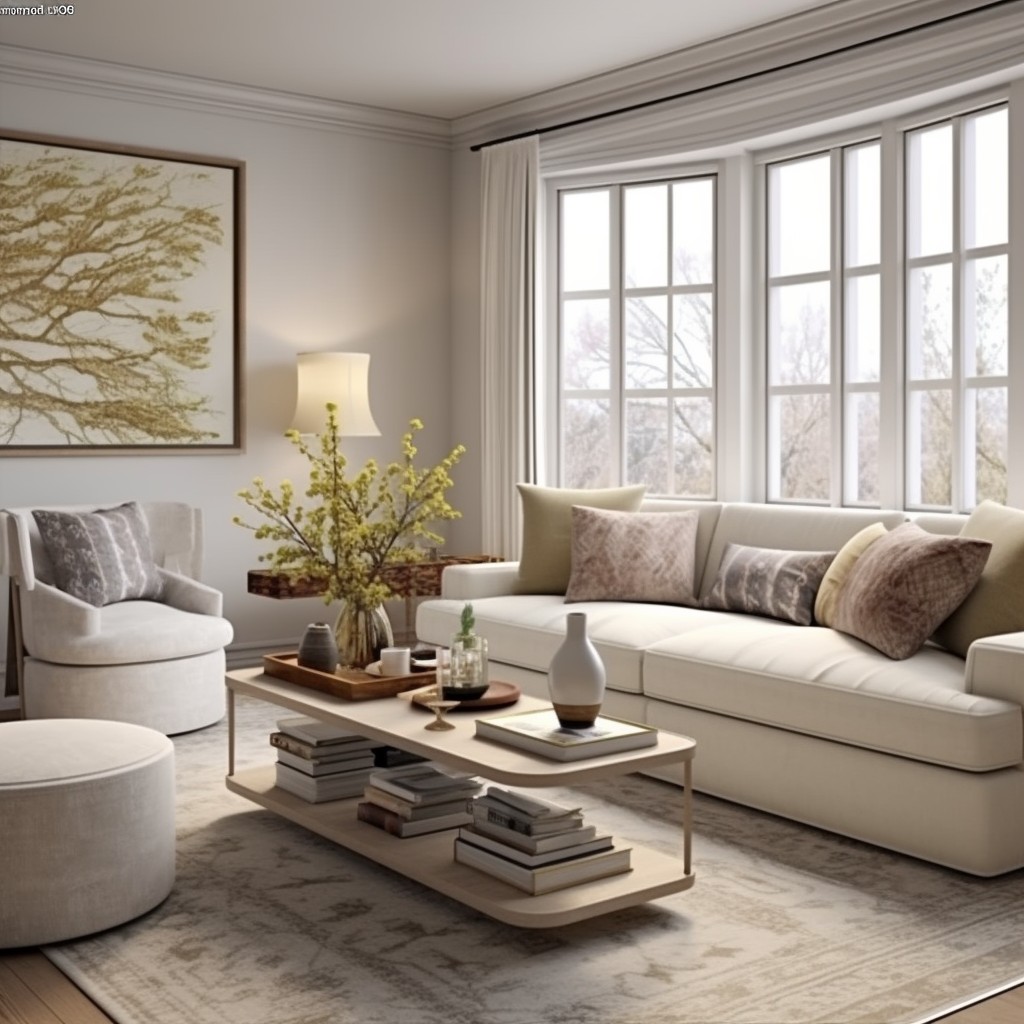
Before deciding whether or not to place a couch in front of a window, it’s important to assess the layout of your room. Consider the size and shape of your space, as well as any architectural features that may impact furniture placement.
Take note of where doors and windows are located, along with any focal points such as fireplaces or built-in shelving units.
When assessing the room layout for placing a couch in front of a window, you’ll want to think about how this arrangement will impact traffic flow through the space. Will it create an awkward bottleneck effect? Or will it allow for easy movement throughout the room?
Another factor to consider is how much natural light enters through your windows. If you have large picture windows that let in plenty of sunlight during certain times of day, placing a couch directly in front could block some or all natural light from entering into other areas within your living space.
Window Types and Styles
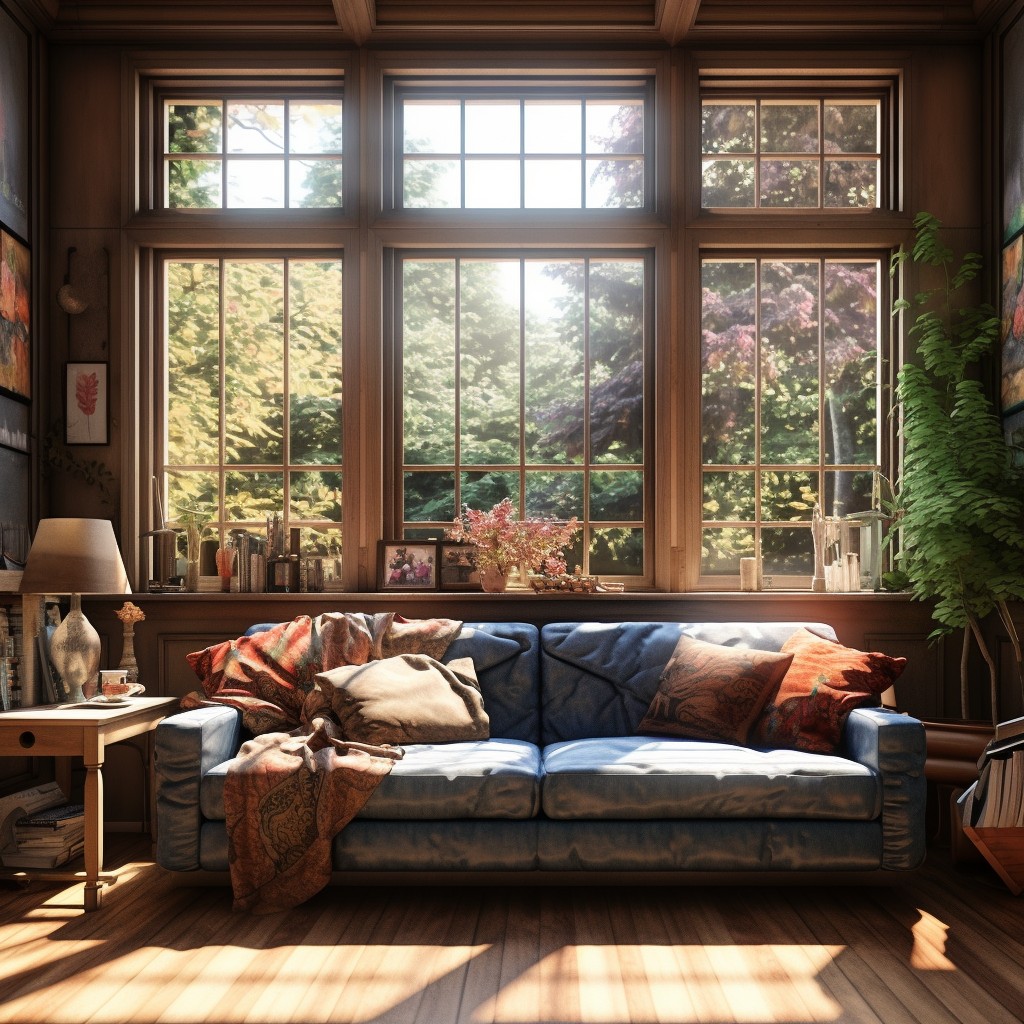
Different types of windows can affect how much natural light enters the room and how much privacy you have. For example, if you have large bay or picture windows that offer stunning views but also let in lots of sunlight, you may want to consider using sheer curtains or blinds that allow for some light control while still maintaining your view.
On the other hand, if your home has smaller casement or double-hung windows with less desirable views (such as facing an alleyway), heavier drapes may be more appropriate for added privacy. Certain window styles like arched or circular shapes can add architectural interest to a space but require careful consideration when placing furniture nearby.
Measuring Your Couch
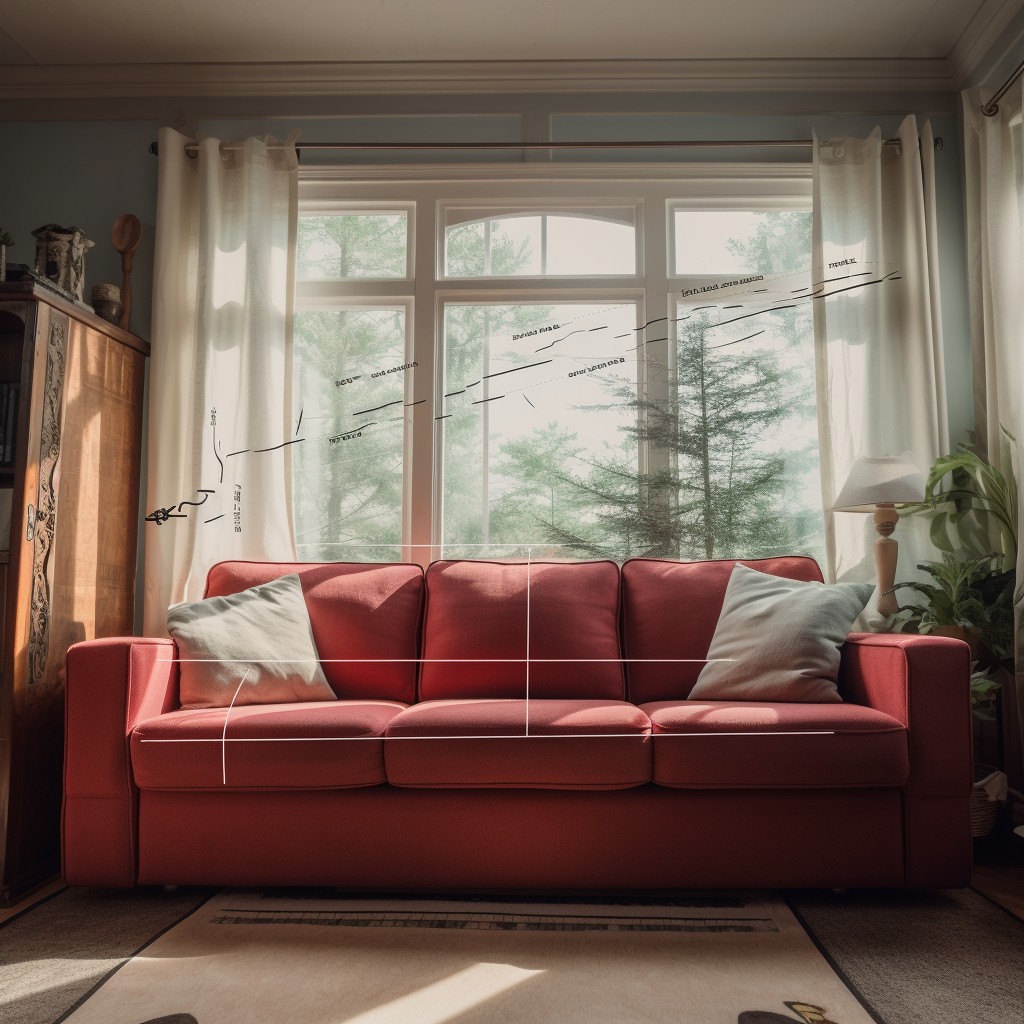
Measuring your couch will help you determine if it’s the right size for the space and whether or not it will fit comfortably in front of the window. Start by measuring the length and depth of your couch, including any armrests or cushions that may extend beyond its frame.
When measuring for placement in front of a window, be sure to take into account any obstacles such as radiators or vents that may affect where you can position your furniture. Consider how much clearance is needed between the back of your sofa and any windowsill trimmings.
Couch Placement Considerations
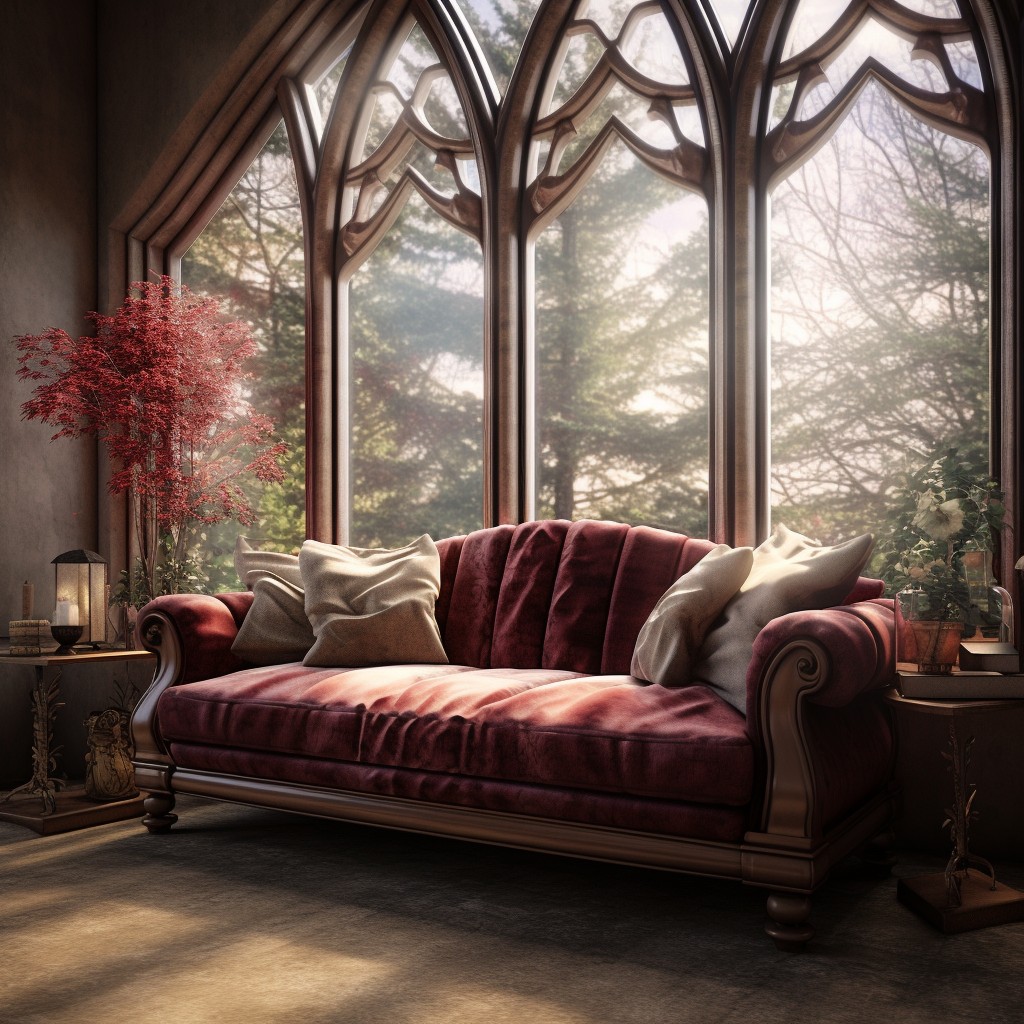
One of the most important is the size and shape of your room. If you have a small living space, placing your couch in front of a window can help create an illusion of more space by drawing the eye outward towards natural light and views.
However, if you have larger windows or multiple windows in one wall, it’s essential to ensure that your furniture placement doesn’t block too much natural light from entering the room. You’ll also want to make sure that any curtains or blinds don’t get caught on your sofa when opening or closing them.
Another consideration is how often you use this particular seating area.
Impact On Natural Light
Depending on the size and placement of your windows, you may find that your couch blocks some or all of the sunlight coming into your room. This can be especially problematic if you have plants that require ample sunlight or if you enjoy reading by natural light.
However, there are ways to mitigate this issue. For example, choosing a low-backed sofa can help maintain an open feel in the room while still allowing for plenty of natural light.
Opting for sheer curtains instead of heavy drapes can allow more sunlight to filter through even when your couch is placed directly in front of a window.
It’s also worth noting that depending on where you live and what time(s) during the day you typically use this space; blocking out direct sun rays might actually be beneficial as it will keep temperatures down and prevent glare from interfering with screen-based activities like watching TV or working at home office setups.
Pros and Cons of Placing a Couch in Front of a Window
On the one hand, it can create an interesting focal point in your room and provide you with stunning views of the outdoors. It also allows for more natural light to enter your space, making it feel brighter and more inviting.
On the other hand, there are some downsides to consider as well. For instance, placing furniture directly in front of windows may obstruct airflow or make it difficult to open or close curtains or blinds properly.
If you live on a busy street or near neighbors who might be able to see into your home from outside when passing by at night time – privacy could become an issue.
It’s important that you weigh these pros and cons carefully before deciding whether this is the right choice for your living space.
Tips for Narrow Living Spaces
It’s essential to consider some tips before making this decision. First and foremost, measure the width of your room and ensure that there is enough clearance for foot traffic around the couch.
You don’t want people bumping into furniture as they move through your home.
Another tip is to choose a low-profile sofa that won’t overwhelm the space visually or physically. A sleek design with clean lines will help create an open feel while still providing comfortable seating.
Consider using accent chairs instead of additional sofas if you need more seating options but don’t want to overcrowd your living area further.
Use light colors on walls and floors along with sheer curtains or blinds on windows facing natural light sources like trees or gardens outside so that sunlight can penetrate easily into every corner without being blocked by heavy fabrics or dark hues which may make rooms appear smaller than they are.
Choosing the Right Couch Style for Window Placement
First and foremost, you want to make sure that your couch doesn’t obstruct the view from your window. If you have a beautiful garden or an amazing cityscape outside of your home, then placing a bulky sofa in front of it would be counterproductive.
Instead, opt for low-profile sofas with clean lines that won’t block too much light or take up too much space. Sectional sofas can also work well in front of windows as they can be arranged in different configurations depending on the size and shape of your room.
Another important factor is fabric choice – if you’re placing a couch directly under sunlight streaming through the window during certain times of day (such as afternoon), avoid fabrics that fade easily like silk or velvet; instead choose durable materials such as leather or microfiber.
Privacy and Security Concerns
If your living room is on the ground floor or faces the street, you may want to think twice about this furniture arrangement. A couch in front of a window can make it easier for outsiders to see inside your home, compromising your privacy.
To address these concerns, you could opt for sheer curtains that allow natural light while still providing some level of privacy. Alternatively, installing blinds or shades will give you more control over how much light enters the room while also ensuring that no one can peek inside.
Another option is adding frosted glass film on windows which allows natural light but obscures visibility from outside.
Balancing Functionality and Aesthetics
While you want your living space to look beautiful, you also need it to be practical and comfortable. One way of achieving this is by choosing furniture that complements the style of your windows while still serving its intended purpose.
For instance, if you have large bay windows with an excellent view outside, consider opting for low-profile seating options like loveseats or armchairs instead of bulky sofas. This will allow more natural light into the room while still providing ample seating space for guests.
On the other hand, if privacy is a concern or there’s too much glare from direct sunlight coming through your window during certain times of day – choose heavier drapes or blinds that can block out unwanted light when needed but can be easily opened up when not required.
Maintaining a Balanced Room Design
You don’t want your room to feel lopsided or cluttered. To achieve this, consider the other elements in the room and how they can complement your new furniture arrangement.
For example, if you have a large piece of artwork on one wall opposite the window where you plan to place your couch, try adding smaller pieces on either side of it for symmetry. Or if you have an accent chair that’s currently positioned next to the window but will need to be moved with your new layout, consider swapping out its cushion covers or throw pillows with ones that match those on your sofa.
Another way to maintain balance is by using color and texture throughout the space. If you’re placing a bold-colored couch in front of neutral-toned windows, add some colorful curtains or drapes for contrast.
And don’t forget about rugs! A patterned rug can help tie together different design elements while also providing comfort underfoot.
Window Treatment Considerations for Couch Placement
The right choice can enhance your room’s aesthetic appeal while also providing privacy and light control.
If you’re opting for curtains or drapes, make sure they don’t obstruct the view from your window when opened. Choose lightweight fabrics that won’t weigh down on the rod or block natural light during daytime hours.
Blinds are another popular option for windows behind couches as they offer more flexibility in terms of controlling natural light and privacy levels. However, if you have small children or pets at home who may get tangled up in cords, opt for cordless blinds instead.
Another consideration is how much space there is between your couch and the wall/window frame. If there isn’t enough clearance to install traditional curtain rods or blinds brackets without interfering with furniture placement, try tension rods that fit inside the frame itself.
Accessorizing Your Couch
Adding some decorative elements can help create a cohesive and inviting space. Start by choosing throw pillows that complement the color scheme of your room and add texture or pattern for visual interest.
You could also drape a cozy blanket over the back of the couch for an extra layer of comfort.
Another way to accessorize is by adding side tables on either end of the sofa, which not only provide practical surfaces but also give balance to your furniture arrangement. Consider placing lamps on these tables as well, which will offer additional lighting options while creating ambiance in your living space.
If you have enough room between the window and couch, consider adding potted plants or floor vases with tall branches behind one end or both ends – this will bring life into any dull corner while maintaining symmetry within that area.
Integrating a Window Seat
A built-in bench or cushioned seating area can provide both comfort and style while also maximizing natural light in the room. This is especially useful if you have limited floor space and want to create an additional seating area without cluttering up the room with extra chairs.
When it comes to integrating a window seat, there are several options available depending on your preferences and needs. You could opt for a custom-built bench that fits snugly into the alcove beneath your windowsill or choose from pre-made options that can be easily installed.
To make sure that this addition complements rather than clashes with other elements in the room, consider matching fabrics or colors between curtains, cushions, and upholstery on furniture pieces such as sofas or armchairs nearby.
Adjusting to Variety of Window Sizes and Styles
For example, if you have large bay windows that offer stunning views, you may want to position your couch at an angle or create a cozy seating area around them. On the other hand, smaller windows may require more creative solutions such as using low-profile furniture or opting for sheer curtains instead of heavy drapes.
It’s important to consider both form and function when adjusting to different window sizes and styles. If privacy is a concern with larger windows, consider adding blinds or shades that can be easily adjusted for light control while still maintaining privacy.
For odd-shaped windows like arched or circular designs, try positioning your couch slightly off-center so as not to obstruct any unique architectural features. Alternatively, use decorative accents like throw pillows or artwork on nearby walls to draw attention away from any awkward angles.
Floating Couch Arrangement
This involves positioning the couch perpendicular to the window, creating an open and airy feel while still allowing natural light to filter through. A floating arrangement can also help define separate areas within an open-concept living space.
To make this work effectively, ensure that there is enough clearance between the back of your sofa and any other furniture or walls behind it. You’ll want at least 18 inches of space for comfortable traffic flow around the seating area.
Another benefit of a floating couch arrangement is that it allows you to showcase other design elements in your room such as artwork or accent walls without obstructing them with bulky furniture pieces.
When considering whether or not to put a couch in front of a window, remember that there are various options available depending on your specific needs and preferences.
Maximizing Natural Light With Furniture Arrangement
If you’re looking to maximize the amount of sunlight that enters your room, there are some furniture arrangement tips you can follow.
Firstly, choose a low-profile couch that won’t obstruct too much of the window. This will allow more light to filter through and brighten up your living area.
Opt for lighter-colored upholstery or fabrics with sheen as they reflect more natural light than darker colors.
Another way to maximize natural light is by positioning other pieces of furniture strategically around the room. For example, place mirrors opposite windows as they reflect and amplify sunlight throughout space.
Consider adding sheer curtains or blinds instead of heavy drapes which can block out too much sun during daytime hours while still providing privacy when needed at night time.
Alternatives to Putting a Couch in Front of a Window
If you’re looking for alternatives to this furniture arrangement, there are several options worth considering.
One alternative is to place your couch perpendicular or at an angle from the window. This approach allows you to maintain natural light while still creating a cozy seating area that doesn’t obstruct the view outside.
Another option is to use other pieces of furniture as dividers between your windows and seating areas. For example, bookshelves or console tables can provide separation without blocking natural light.
If you have limited floor space but still want ample seating options, consider using chairs instead of a traditional sofa. Placing two chairs facing each other with their backs against opposite walls creates symmetry and balance in any room while also allowing plenty of natural light into space.
Be Mindful of Fabric Type and Curtain Placement
If you choose a material that fades easily or is difficult to clean, you may end up regretting your decision. Opt for durable fabrics like leather or microfiber that can withstand direct sunlight and are easy to maintain.
Another factor to keep in mind when placing furniture near windows is the placement of curtains or blinds. Heavy drapes can make it difficult for natural light to filter into the room, while sheer curtains may not provide enough privacy if your couch faces an area with high foot traffic.
Consider installing curtain rods above and beyond either side of the window frame so that they don’t interfere with any seating arrangements below them. This will also allow more natural light into space without sacrificing privacy.
Try a Console Table
A console table is a narrow piece of furniture that can be placed against the wall beneath the window. This will create an attractive focal point and provide additional storage space for books, plants or decorative items.
A console table can also serve as an alternative to traditional end tables or coffee tables when paired with your sofa. It’s important to choose one that complements your existing decor and fits within the dimensions of your room.
When selecting a console table, keep in mind its height relative to the backrest of your couch so it doesn’t obstruct any views out through the window. You may also want to consider adding some lighting above it such as sconces or lamps on either side which will help balance out natural light from outside.
There are many ways you can make use of both windows and sofas without sacrificing style or functionality in any way!
FAQ
Is it OK to place sofa in front of window?
Yes, placing a sofa in front of a window is considered okay, although it is often debated in the world of interiors.
What kind of furniture can I put in front of a window?
In front of a window, you can place furniture like a sofa, couch, daybed, or reading chair to create a cozy and inviting space while taking advantage of natural light.
Can you put a couch in front of a window feng shui?
No, placing a couch in front of a window is not advisable in feng shui, as it should be placed against a stable wall for a sense of safety.
Is it OK to place sofa in front of door?
No, placing a sofa in front of a door is not advised, as it should be positioned in a central location facing the room’s focal point.
How can I position a couch in front of a window without obstructing natural light?
Position the couch in front of the window by choosing a low-back design and placing it a few inches away from the window to allow natural light to flow freely.
What factors should I consider when placing a couch in front of a window for optimal room layout?
When placing a couch in front of a window for optimal room layout, consider factors such as natural light, window size, view obstruction, and potential damage to the couch from sunlight.
Are there specific types of window treatments that work best when a couch is placed in front of a window?
The best types of window treatments when a couch is placed in front of a window include lightweight curtains, vertical blinds, or roller shades for easy accessibility and minimal interference.

